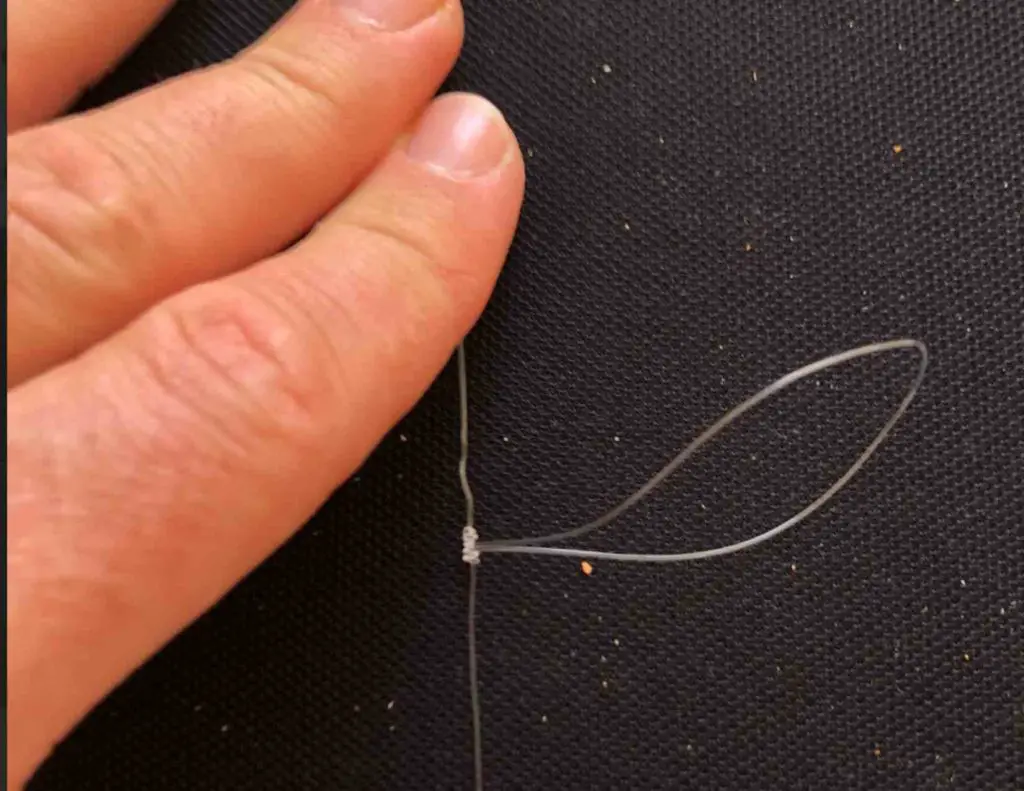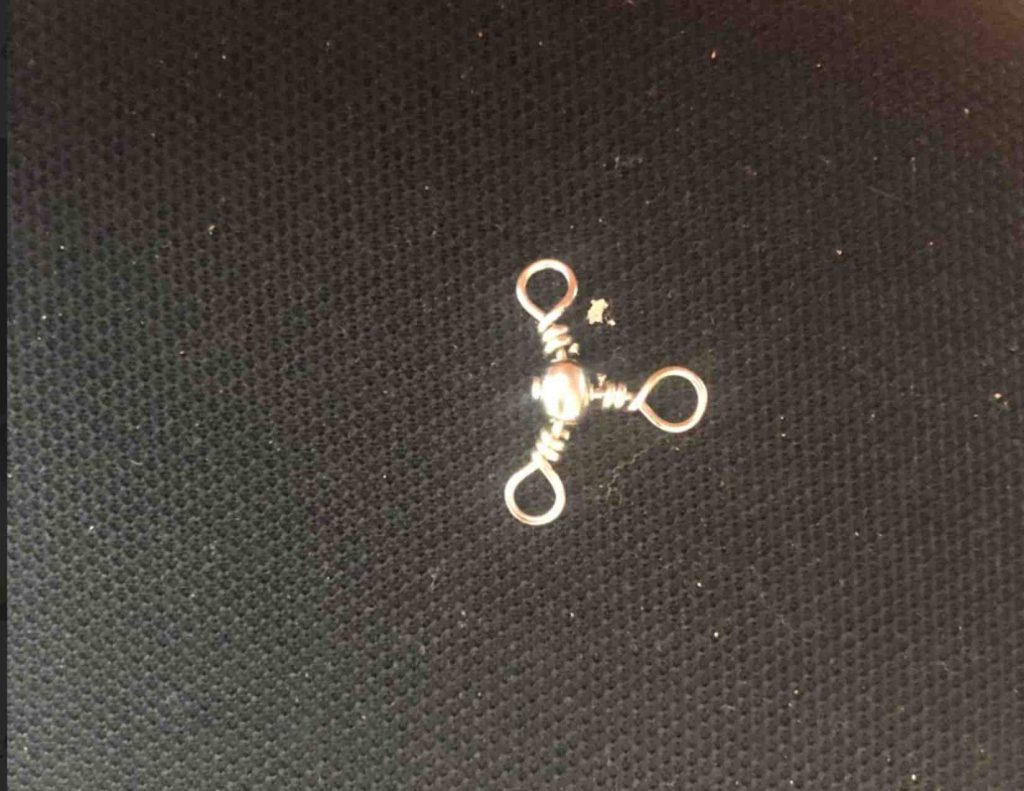Are you tired of struggling to tie a dropper loop knot? Or are you just looking for an alternative rig to add to your fishing arsenal?
In this article, we’ll explore what the dropper loop rig is, its advantages and disadvantages, and some alternatives that you might want to try.
One of the biggest challenges is tying the knot itself. It can be a tricky knot to tie, especially if you’re new to fishing.
Let’s have a look at some quick and easy Dropper Loop alternatives.
What Is a Dropper Loop?

A dropper loop is a type of fishing knot that creates a loop in the middle of a fishing line.
One of the main advantages of the dropper loop rig is its versatility.
It can be used in a variety of fishing situations, from catching bottom-dwelling fish to trolling for pelagic species.
And because the dropper loop can be adjusted, you can use different baits or lures at different depths to increase your chances of catching fish.
To tie a dropper loop, follow these simple steps:
- Double over the line to create a loop.
- Twist the loop to create a figure-eight shape.
- Take the tag end of the line and pass it through the center of the figure-eight.
- Pull the tag end through the loop and tighten the knot.
The dropper loop rig is commonly used in bottom fishing to present multiple baits at different depths. It is also popular in fly fishing to add an additional fly or nymph to the leader.
The dropper loop rig can be used with a variety of baits, including live bait, cut bait, and artificial lures.
Some of the fish species that can be caught using the dropper loop rig include sheepshead, snapper, rockfish, and many others. The dropper loop rig is also effective for catching a variety of game fish, including trout, bass, and salmon.
Check out more quality surf rigs here.
Alternatives to the Dropper Loop Rig – 3 Top Choices
There are many alternatives to the dropper loop rig that you can use depending on your preferences and fishing conditions.
In this section, we will discuss three top choices of alternative knots or rigs that you can try.
Factors that influence the choice of alternative knots or rigs include the line strength, knot strength, ease of tying, and the type of fish you are targeting.
Some anglers prefer to use alternative knots or rigs instead of the dropper loop rig because they find it easier to tie or they believe it offers better strength.
Alternative 1: Surgeon’s Loop

If you’re looking for a reliable alternative to the dropper loop rig, the surgeon’s loop is a great option.
This simple and strong loop knot can be used to attach hooks, flies, or weights to a fishing line.
So, how do you make it? It’s actually quite easy.
- First, double over a section of line to create a loop.
- Then, tie an overhand knot with two or more turns, making sure to leave the loop at the end.
- Finally, pass the loop through the knot and tighten it down.
Compared to the dropper loop rig, the surgeon’s loop has several benefits.
For one, it’s easier to tie.
You don’t have to worry about creating multiple loops or tying complicated knots.
The surgeon’s loop is also stronger than a single dropper loop. It’s less likely to slip or twist, which means you can fish with more confidence targeting larger species.
When tying a leader, the surgeon’s loop can also be used to attach the leader to the main line. This is especially useful when fishing for big game or in situations where you need extra strength and durability.
Alternative 2: Spider Hitch

The spider hitch knot creates a double line leader at the end of your fishing line, making it a great choice for heavier loads.
So how do you tie a spider hitch?
- First, form a loop with one hand and wrap the line around the thumb and index finger of the other hand several times.
- Then, pass the loop through the wraps and pull tight.
- Voila! You now have a spider hitch.
Compared to the dropper loop rig, the spider hitch is stronger and works well with both monofilament and fluorocarbon lines.
It also allows for easy attachment of hooks or weights using a loop-to-loop connection.
One thing to keep in mind is that the spider hitch is a bit more complex than the dropper loop, so it may take some practice to get it right. However, once you’ve mastered the technique, you’ll have a reliable knot that can handle heavier loads.
Alternative 3: Three-Way Swivel

If you’re looking for a dropper loop alternative that eliminates the need for tying any loops, a three-way swivel might be the solution.
This metal device has three eyes or rings that can be attached to different lines or leaders, making it easy to adjust the distance between the hook or weight and the main line.
The three-way swivel rig is great for targeting bottom-dwelling fish such as flounder or red snapper.
The three-way swivel rig allows you to use two baits at once, increasing your chances of catching fish. It is also easy to tie and offers good strength.
It also can help to avoid tangles because the swivel holds the baited line and hooks out a little from the main leader.
To tie the three-way swivel rig, you will need a three-way swivel, two leaders, a line for the hook, and a hook.
- Tie one end of each leader to the top and bottom of the 3-way swivel.
- Then take another piece of line for the hook and tie one end to the hook, and the other end to the middle eye of the swivel.
- Attach your bait to each hook, and you are ready to fish.
The drawbacks of this rig option though are:
- You have to tie a few more knots than the Dropper Loop Rig when you use the swivel
- With more knots, there is potentially a greater risk of failure of a knot – so make sure they are tied tight.
The three-way swivel allows you to use different strength lines for your connections, which can be useful when targeting different species or sizes of fish.
By using a heavier leader for your hook or fly, you can ensure that it won’t break under the weight of a larger fish.
Challenges and Drawbacks of the Dropper Loop Rig
When fishing with the dropper loop rig, there are several common problems or issues that anglers face.
Let’s take a closer look at some of these challenges and drawbacks and explore possible solutions or tips to overcome them.
Weaken mainline
One of the main issues with the dropper loop rig is that it can weaken the main line by creating stress points.
This can happen when the loop is tied too tightly or when the knot is not properly seated. To avoid this, it is recommended to use a strong and abrasion-resistant line for the dropper loop rig.
Tangles
Another challenge is that the dropper loop can get tangled with other lines or hooks during casting or retrieving.
To prevent this, you can use a swivel or a snap on the main line to prevent line twist. Additionally, you can try using a double twist dropper loop for extra strength and stability.
Tying skills
Tying the dropper loop correctly and consistently can also be a challenge.
It can be difficult to form the loop and tighten it properly, especially when using a small hook or lure. To make it easier, you can use a pen or a matchstick to help form and tighten the loop.
Slips & Twists
Under pressure from big fish, the dropper loop can slip or twist, causing the hook to lose its position and potentially resulting in a lost catch.
To avoid this, you can try using a perfection loop or a seaguar knot to tie the dropper loop. These knots provide extra strength and stability, making it less likely for the loop to slip or twist.
Check out more of the best surf fishing rigs here.
Dropper Loop Alternative Summary
Overall, the dropper loop rig is a popular and effective fishing technique, but it does come with some challenges and drawbacks.
Hopefully, we’ve shown some relatively easy and reliable alternatives to the dropper loop that you can use on your next fishing trip.

